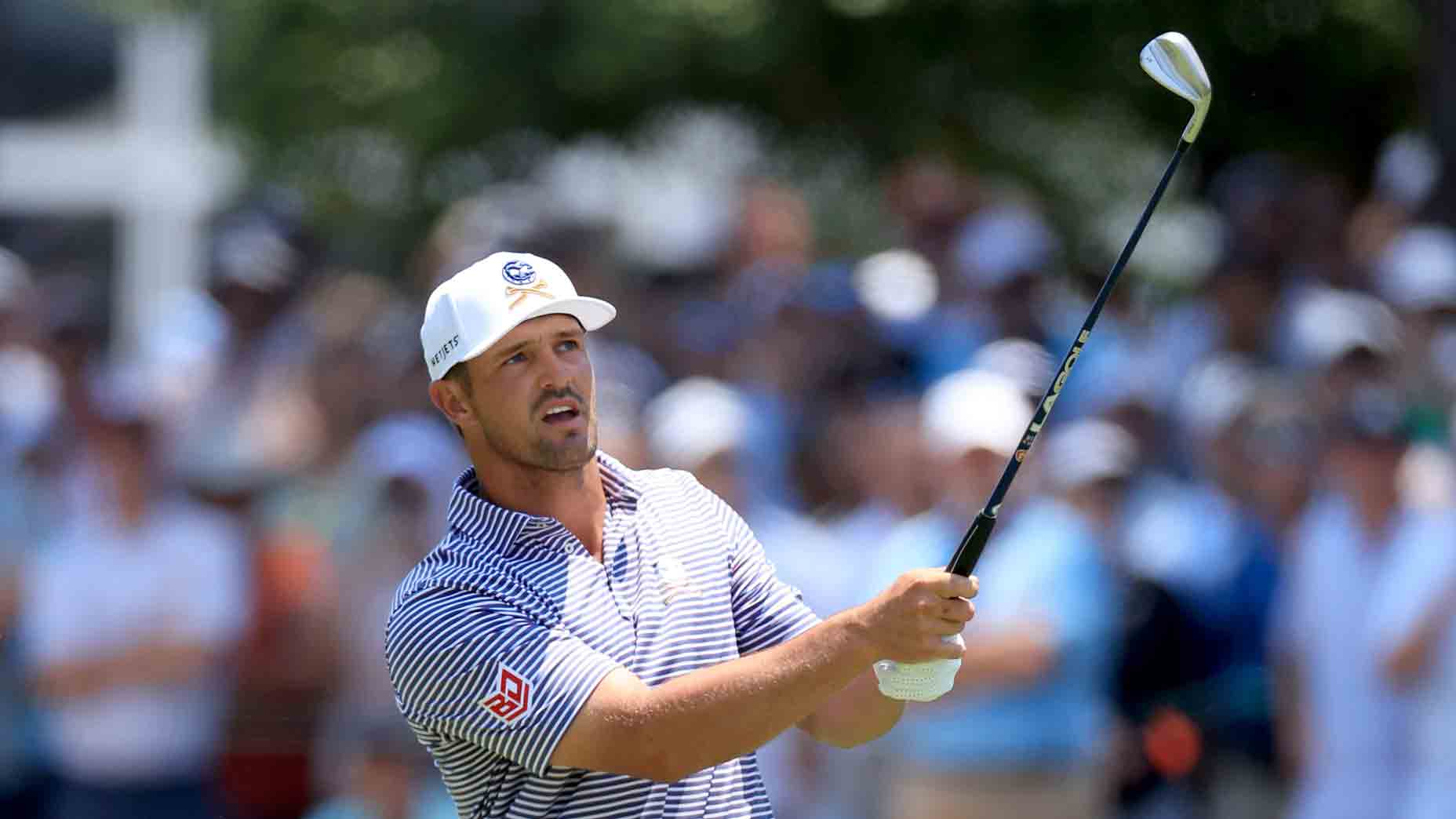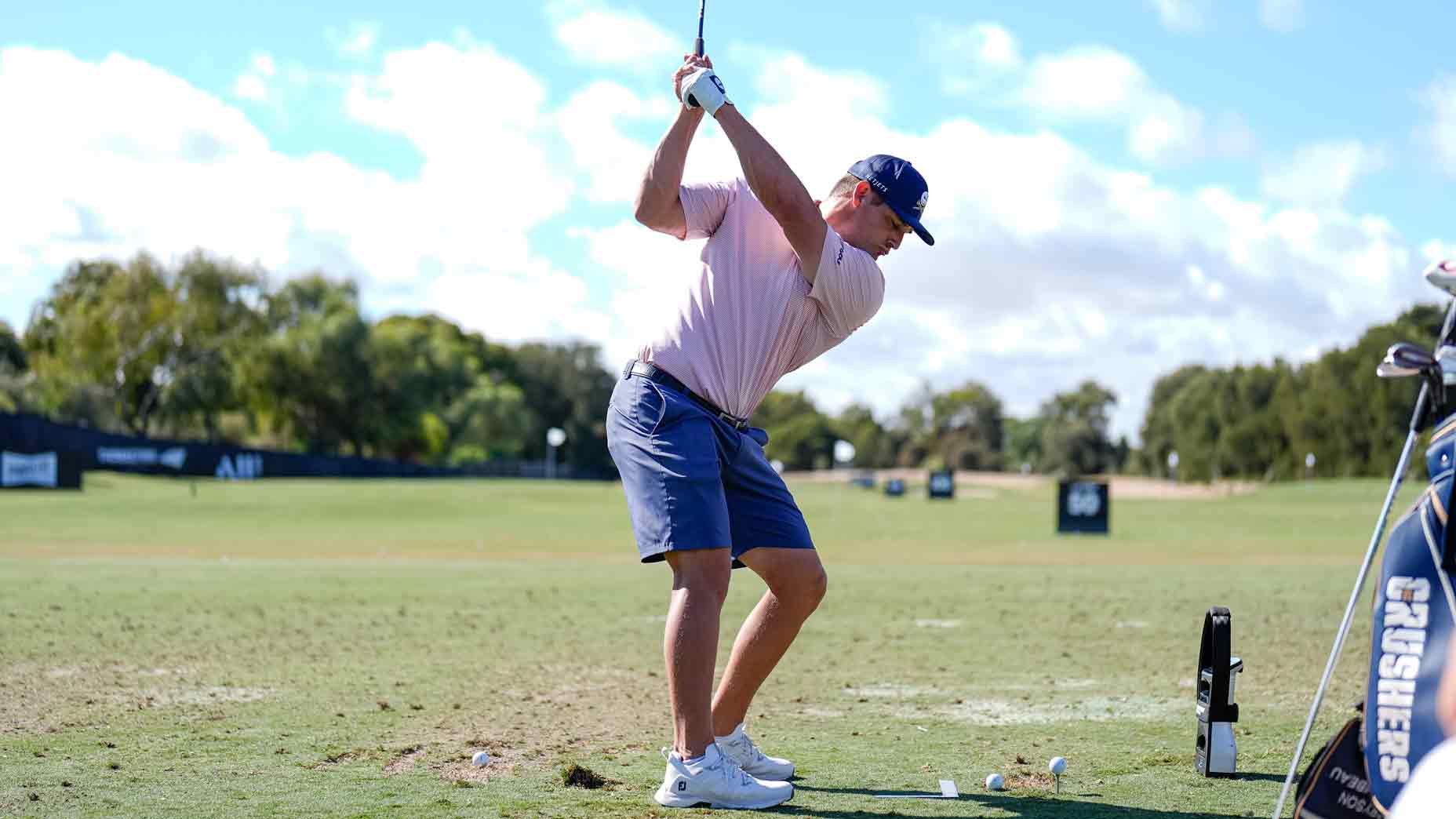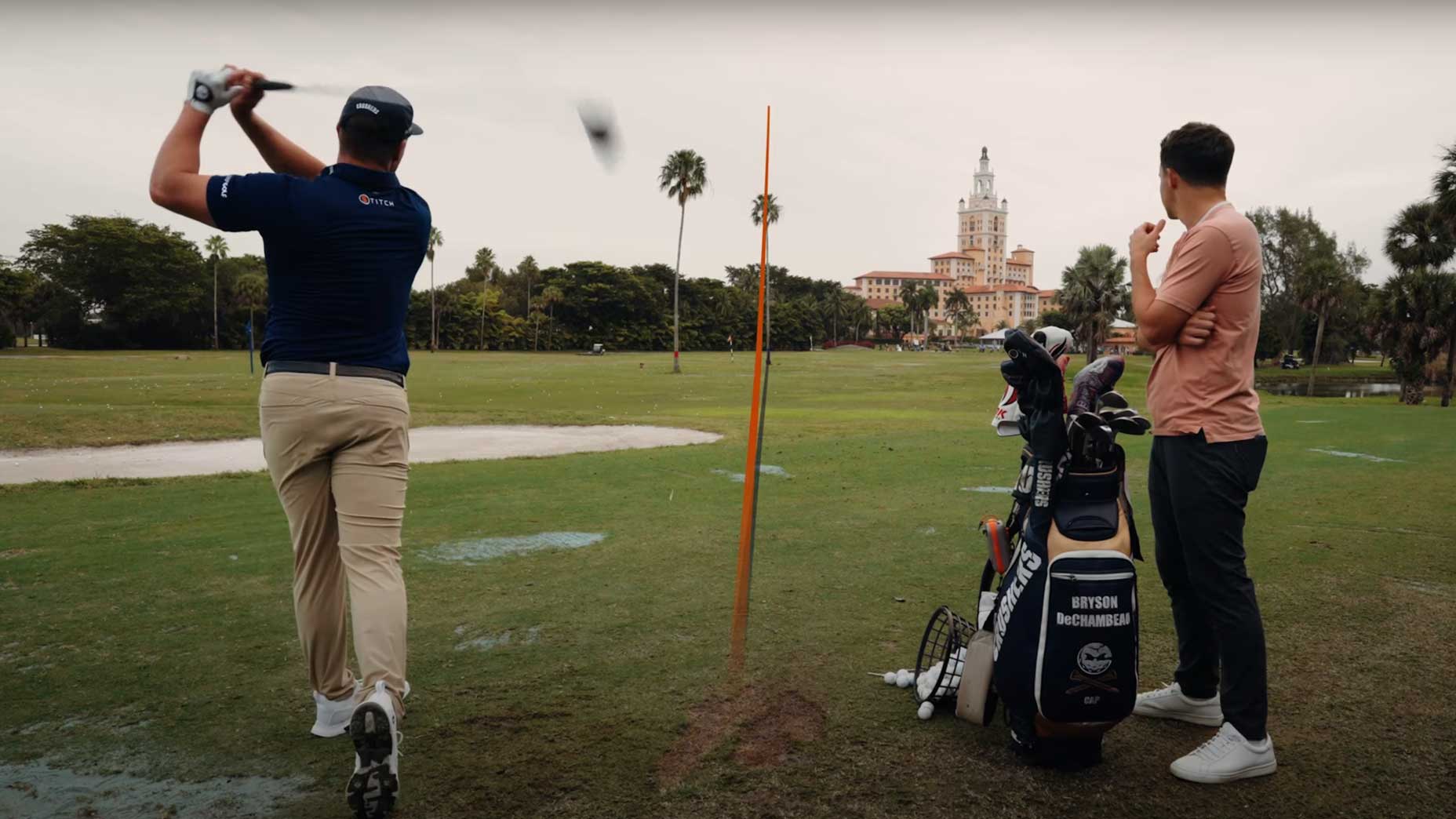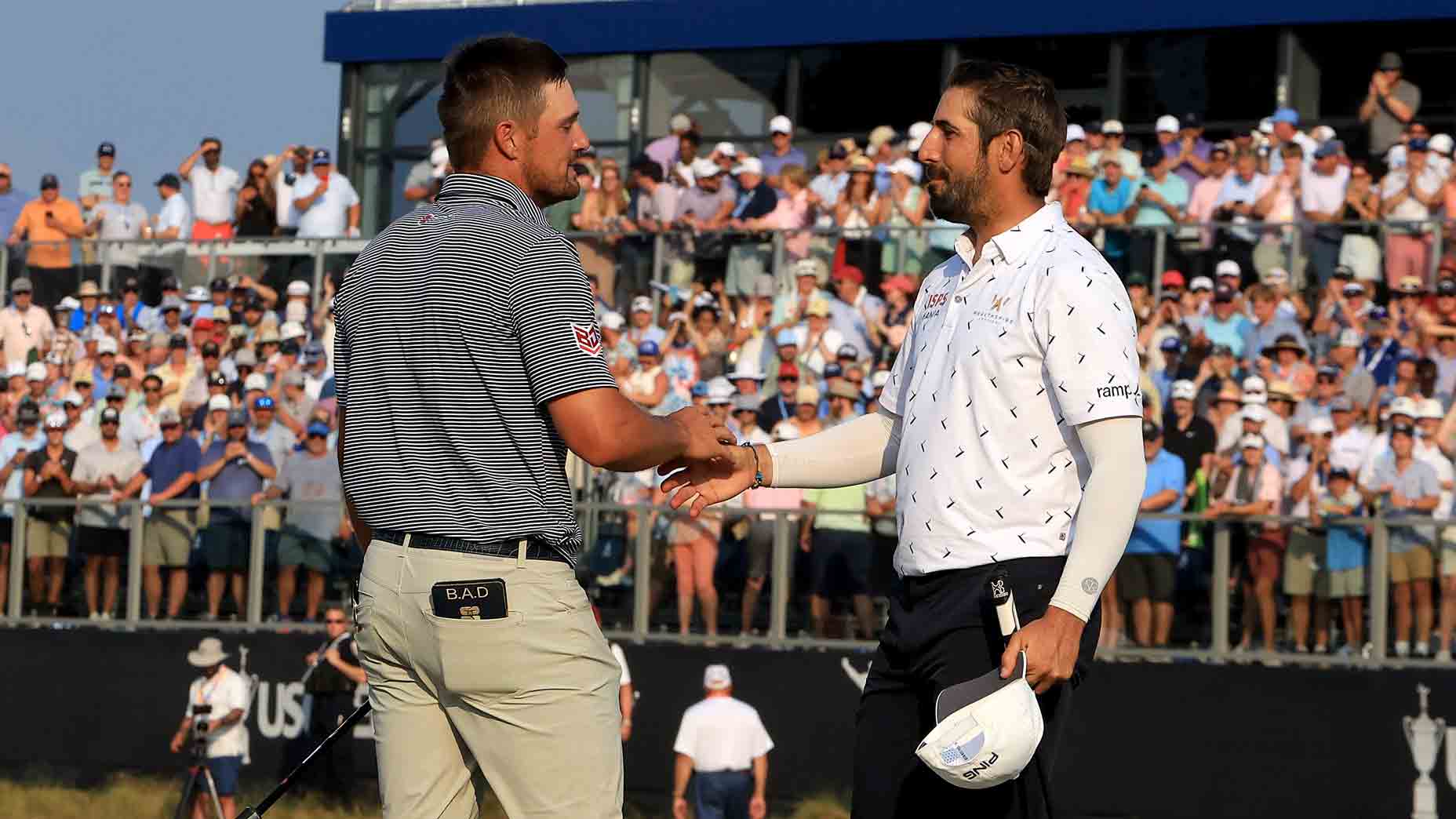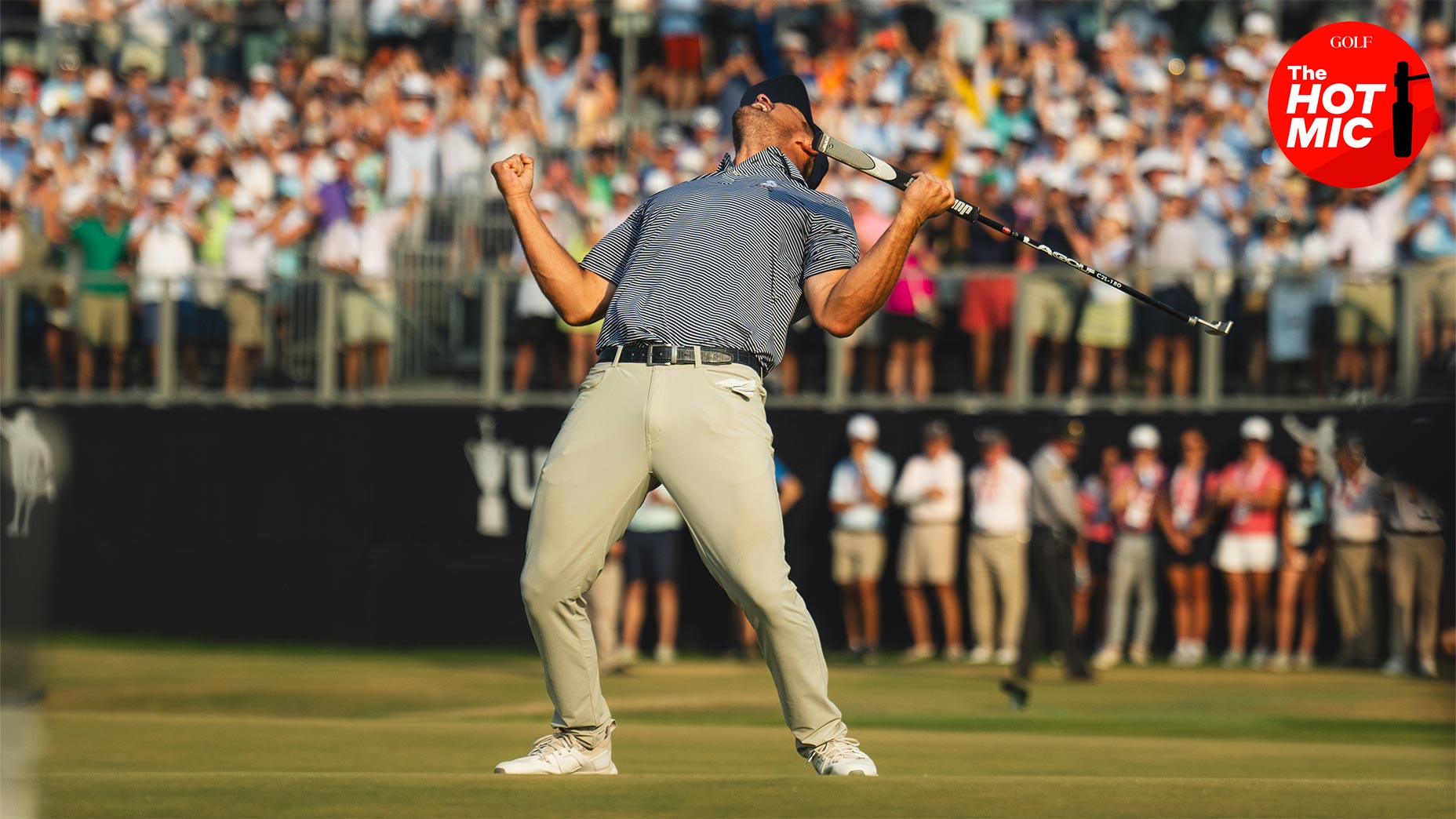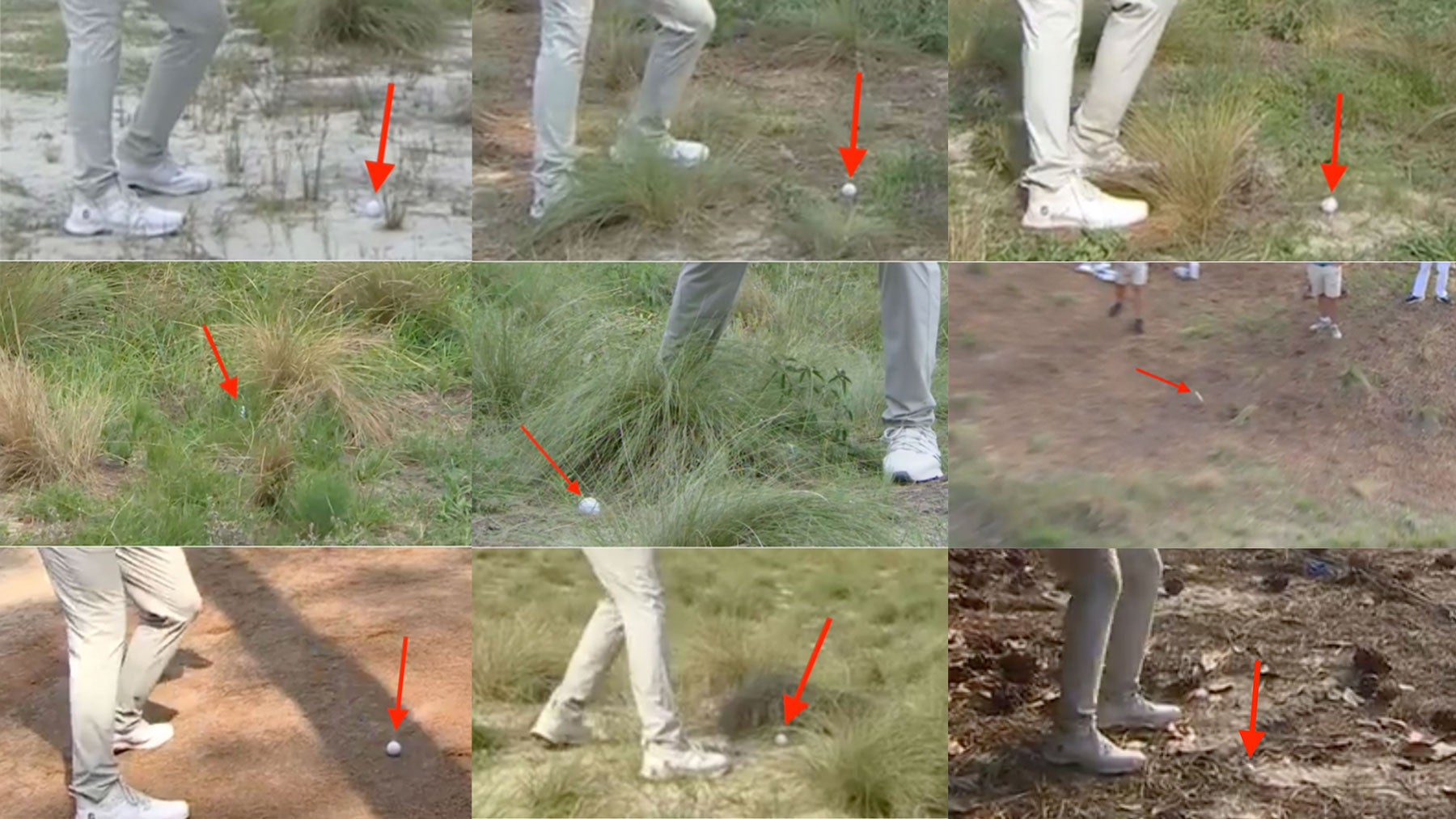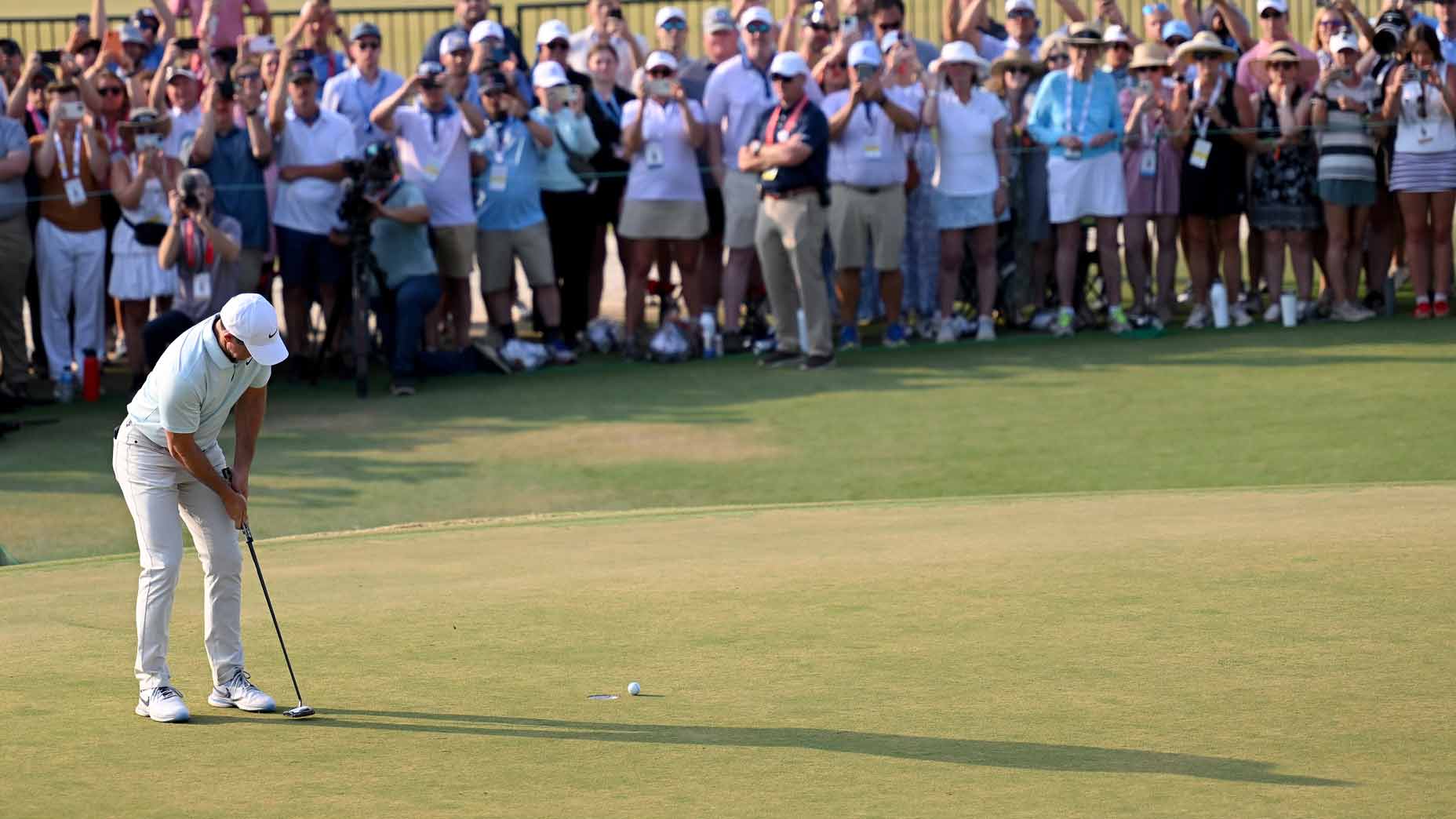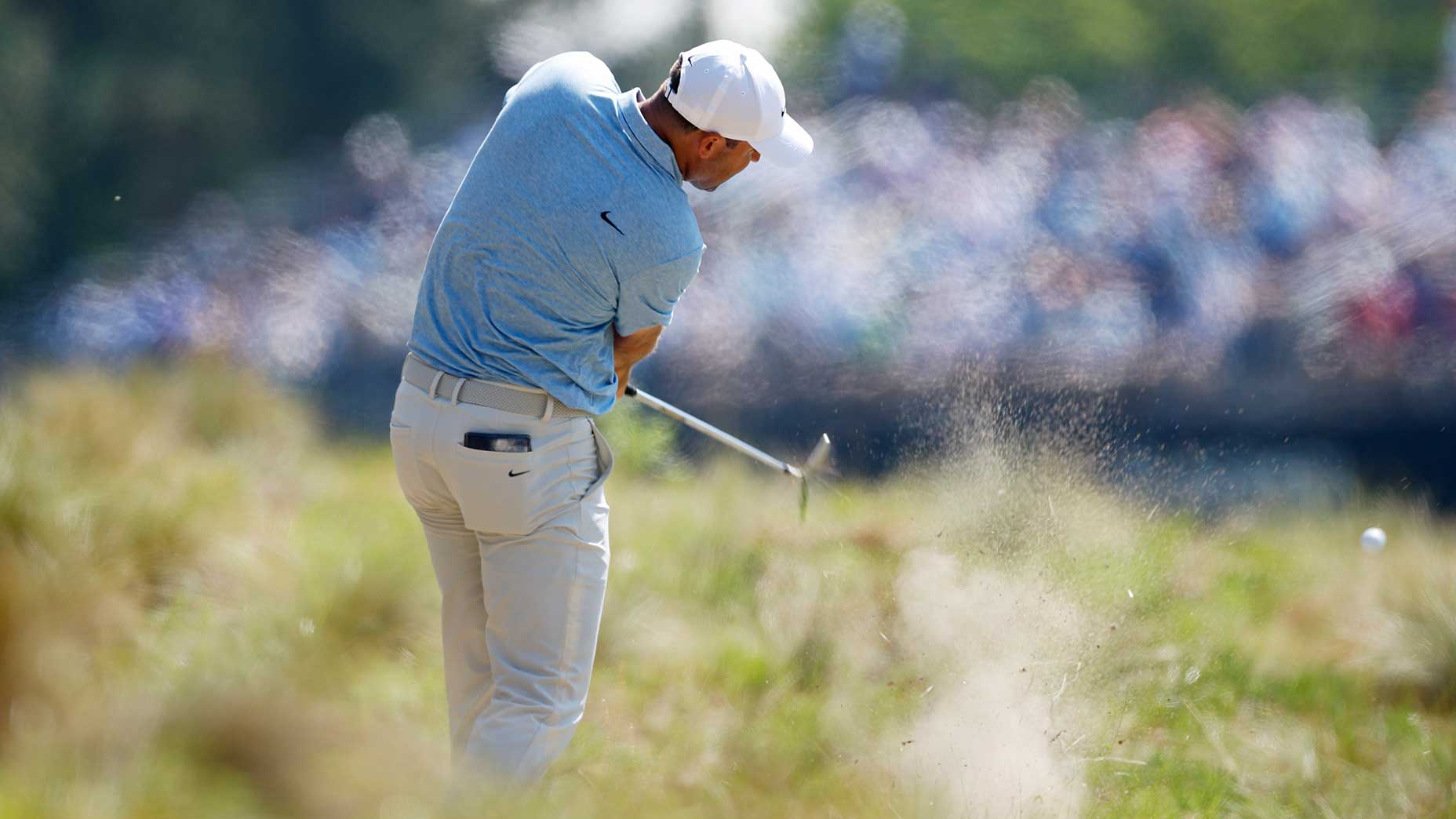‘I used the rules’: Bryson DeChambeau explains flukey U.S Open break that led to birdie
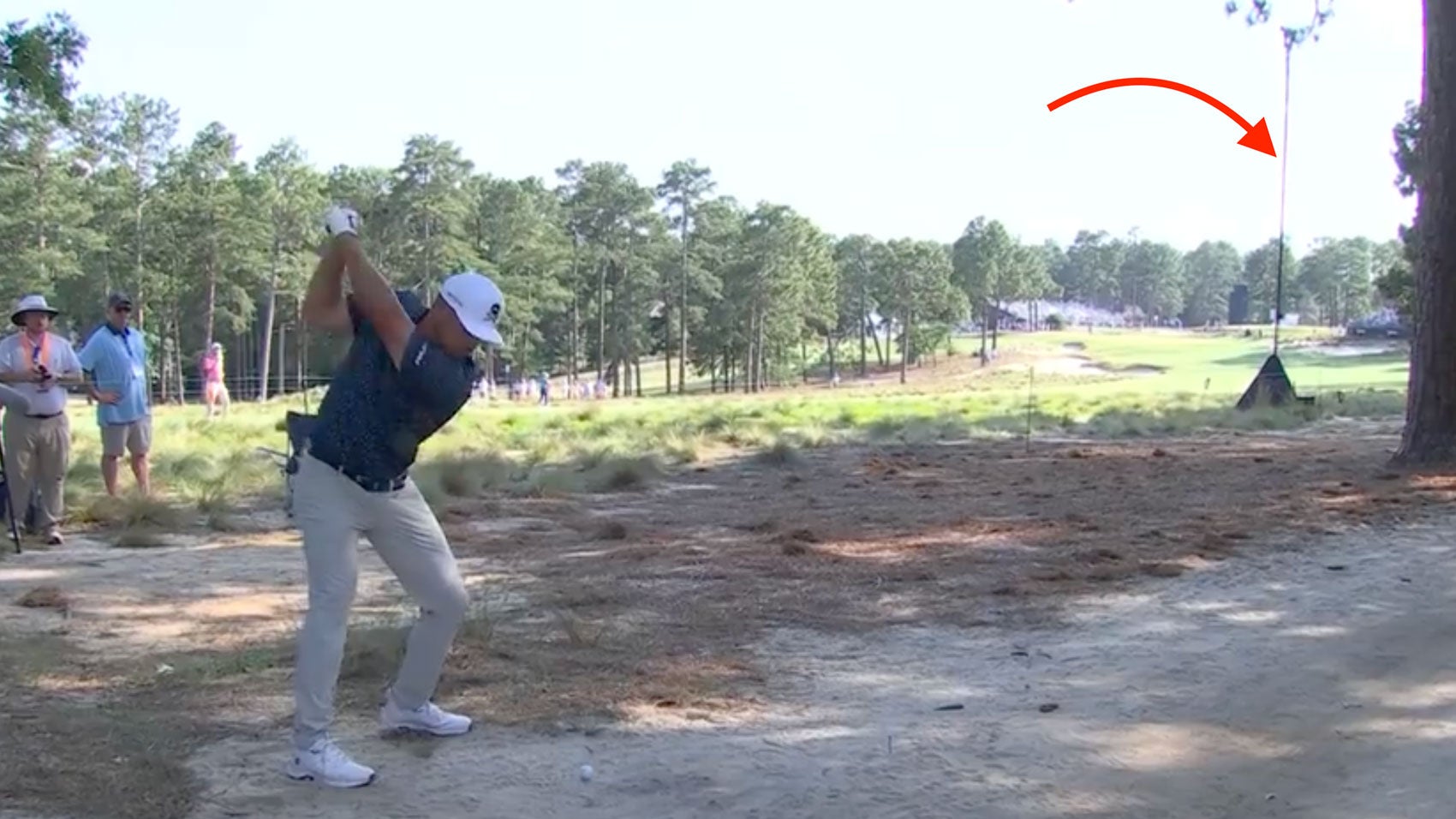
Bryson DeChambeau playing his second shot at the 5th hole on Thursday, moments after he'd received TIO relief.
USGA/NBC
PINEHURST, N.C. — Winning at the highest levels of professional golf requires a little luck. Any pro will tell you that. A gassed chip that rattles the flagstick and drops. A fluffy lie in the rough. Temporary immovable obstruction relief that results in a clearer path to the green.
If that last example tripped you up, a quick word of explanation.
A Temporary Immovable Obstruction, or TIO, is, according to the Rules of Golf, “a structure that is temporarily added on or next to the course, usually for a particular competition, and is fixed or not readily movable. Examples of TIOs are temporary tents, scoreboards, grandstands, television towers and toilets. TIOs include any supporting guy wires connected to them, except when the Committee decides the supporting guy wires are to be treated as immovable obstructions.”
So, yeah, TIOs aren’t something you’re likely to encounter in your Sunday morning fourball match.
“Relief from a TIO,” the rules continue, “is normally allowed when there is physical interference or line of sight interference from the TIO. Interference under this Local Rule means that the player has:
—Physical interference
—Line of sight interference, or
—Both physical and line of sight interference.”
We provide you with this explainer because TIO relief — a favorite punching bag of a vocal community of tweeting Tour watchers — played a pivotal role in Bryson DeChambeau’s opening round at this 124th U.S. Open, where on Friday evening he finds himself at four under par, just one back of Ludvig Aberg’s 36-hole lead. The ruling came into play on the par-5 5th hole, DeChambeau’s 14th hole of the day, after he’d pushed his tee shot into the sandy, pine-peppered scrub right of the fairway.
DeChambeau found his ball in the wooded area but also something else: a narrow ShotLink pole in the vicinity of his intended line. The odds of DeChambeau striking the tracking device with his next shot? Slim to none. But no matter, the obstruction was undoubtedly near or in his line, meaning DeChambeau was entitled to free relief. With a rules official presiding, Golf Digest’s Luke Kerr-Dineen, who was on the scene, reported that “the nearest point of relief that took the ShotLink tower out of play looked to be about 30 feet left of where his ball was, closer to the fairway, plus two more club-lengths.”
That left DeChambeau with not only a cleaner look at the green but also a much better angle to attack. From roughly 250 yards out, he knocked his second shot onto the back-left portion of the green and two-putted for a birdie that moved him to four under. After playing his closing four holes in one over, DeChambeau signed for a three-under 67. On Friday, after his second-round 69, DeChambeau provided more color on Thursday’s TIO situation.
“I looked at it, like, whoa, that cable is right in line with the flagstick where it was coming down, and I know it’s an immovable obstruction, I believe,” he said. “So I asked the rules official. I said, ‘Is this relief?’
“And he goes, ‘Yeah, you’re within one club-length of it in the line-of-sight. So, yes, you get relief, and you can go to the opposite side. So I used the rules to my advantage there.”
DeChambeau acknowledged that he had a path to the green from the position where his drive originally came to rest, but added, “I used the rules to my advantage to where I had a cleaner, better lie and was able to get it up on the green. Sometimes you’re lucky, and sometimes you’re not. In that situation, I was very lucky.”
On occasions Friday, though, lady luck was not in DeChambeau’s corner, he said.
“People might not have seen it,” he said. “But there [were] definitely some lies where I was dug down into the sand, one being 12, another being 2, and then I had some just brush pull my club a couple times and threw it in some weird places.”
DeChambeau wasn’t the only star to get TIO relief in the opening round. So, too, did Scottie Scheffler. After tugging his tee shot right of the green on the par-4 16th, Scheffler found his ball obstructed by a Rolex clock. He took a drop that afforded him a marginally better angle into the green, but was unable to take advantage of his new lie. Scheffler still missed the green and made bogey to drop to two over. He signed for a 71 and followed that on Friday with a 74 to make the 36-hole cut on the number.
To get back in this tournament, Scheffler will need a few birdies, fewer bogeys and, yes, a little luck.

